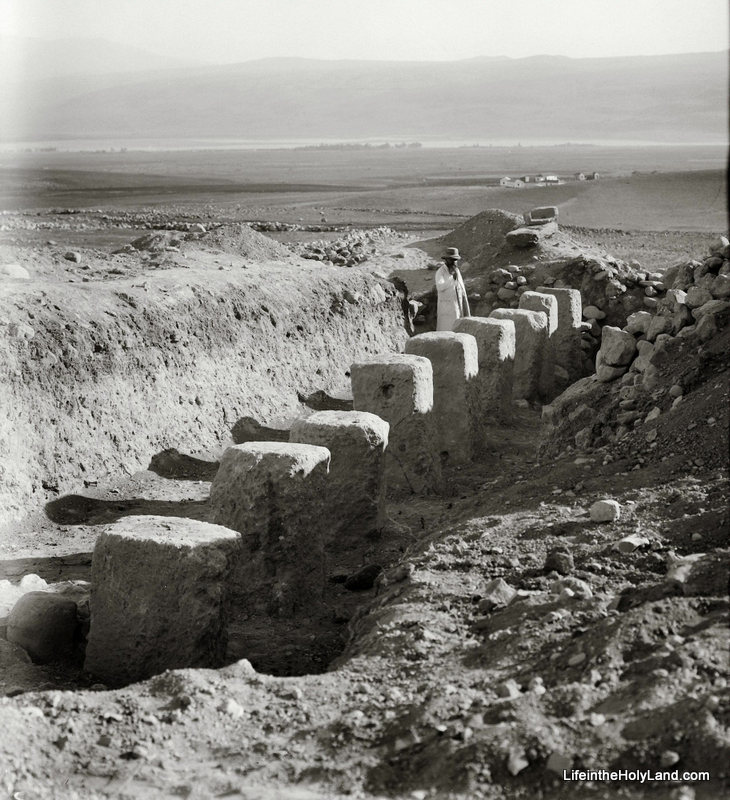(Post by Seth M. Rodriquez)
The excavation season is upon us (as has been made clear through the recent roundup posts here, here and here), so our photo of the week is a picture of some early excavations at a well known site. Can you guess which site it is?
Here are a series of hints for you:
- This photograph was taken sometime between 1928 and 1946.
- This dig was carried out by John Garstang.
- The Arabic name for this site is Tell el-Qedah.
- A row of matching pillars was found only a few yards away.
- The valley in the background is the Huleh Valley.
- This building was later fully excavated by Yigael Yadin, and eventually was moved to a different place on the tell by Amnon Ben-Tor.
The answer to our riddle (and a picture of the whole structure) can be found here.
During a sounding at this site in 1928, Garstang found one of the rows of pillars in a Israelite tripartite pillared building. This type of structure was common in the ninth and eighth centuries B.C. and has been found at Megiddo, Hazor, Beersheba, and elsewhere in Palestine. The function of these buildings has been debated, with some scholars interpreting them as stables and others interpreting them as storehouses. The last I checked, the proponents of the “stable” interpretation had the upper hand … but the readers of this blog are welcome to start the debate again in the comments section.
And for all of you who are in the field this summer … Happy Digging! May you be as fortunate as Garstang was in his brief sounding at Tell el-Qedah in 1928.
This photo and about 600 others are available in Volume 1 of the American Colony and Eric Matson Collection, and can be purchased here for $20 (plus free shipping). Additional images of this site can be seen here on BiblePlaces.com. Additional images of the Huleh Valley in the 1800s and early 1900s can be seen here on LifeintheHolyLand.com.

4 thoughts on “Picture of the Week: Excavations at a Mystery Site in the Early 1900s”
Hazor. Don't give such obvious hints!
Also, the TPBs certainly weren't storehouses- the only interpretations I find plausible for these structures are "stables" (esp. at Megiddo) and "bazaars" (esp. at Tel Hadar).
For a compelling argument that the Megiddo buildings were used as stables, see:
Cantrell, Deborah O. "Stable Issues." In Megiddo IV: The 1998–2002 Seasons, ed. Israel Finkelstein, David Ussishkin, and Baruch Halpern, vol. 2, 630–42. Tel Aviv: Emery and Claire Yass Publications in Archaeology, 2006.
That's a lot of water in the Hulah.